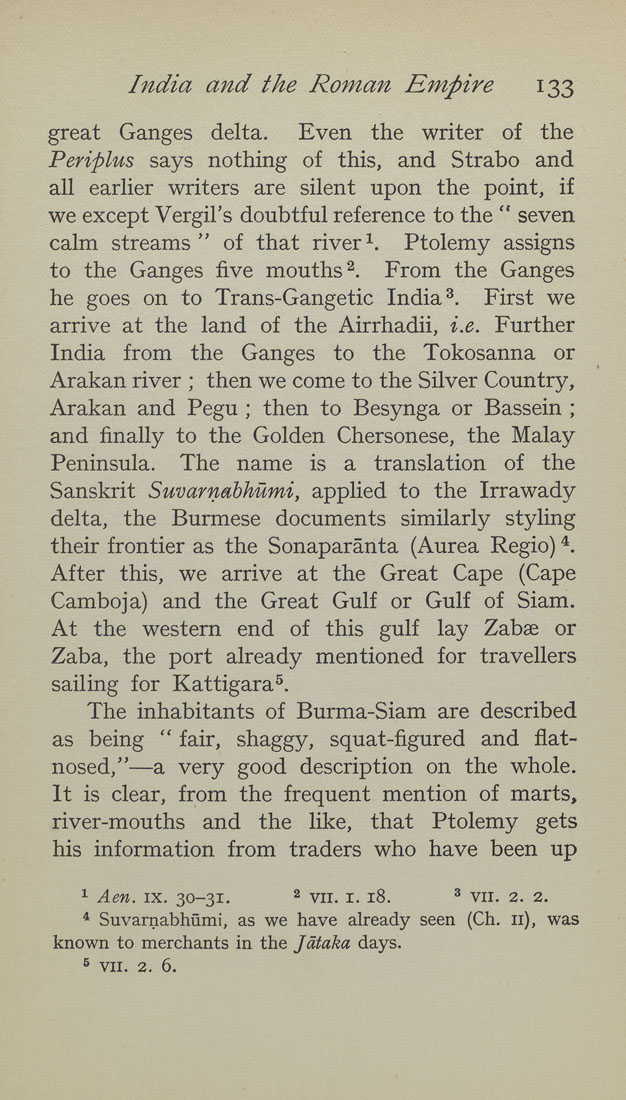India and the Roman Empire 133
great Ganges delta. Even the writer of the
Periplus says nothing of this, and Strabo and
all earlier writers are silent upon the point, if
we except Vergil's doubtful reference to the " seven
calm streams" of that river^. Ptolemy assigns
to the Ganges five mouths^. From the Ganges
he goes on to Trans-Gangetic India ^. First we
arrive at the land of the Airrhadii, i.e. Further
India from the Ganges to the Tokosanna or
Arakan river ; then we come to the Silver Country,
Arakan and Pegu ; then to Besynga or Bassein ;
and finally to the Golden Chersonese, the Malay
Peninsula. The name is a translation of the
Sanskrit Suvarnahhumi, applied to the Irrawady
delta, the Burmese documents similarly styling
their frontier as the Sonaparanta (Aurea Regio) *.
After this, we arrive at the Great Cape (Cape
Camboja) and the Great Gulf or Gulf of Siam.
At the western end of this gulf lay Zabse or
Zaba, the port already mentioned for travellers
sailing for Kattigara^.
The inhabitants of Burma-Siam are described
as being " fair, shaggy, squat-figured and flat-
nosed,"—a very good description on the whole.
It is clear, from the frequent mention of marts,
river-mouths and the like, that Ptolemy gets
his information from traders who have been up
1 Aen. IX. 30-31. 2 VII. I. 18. ^ VII. 2. 2.
* Suvarnabhiimi, as we have already seen (Ch. 11), was
known to merchants in the Jdtaka days.
5 VII. 2. 6.
|








